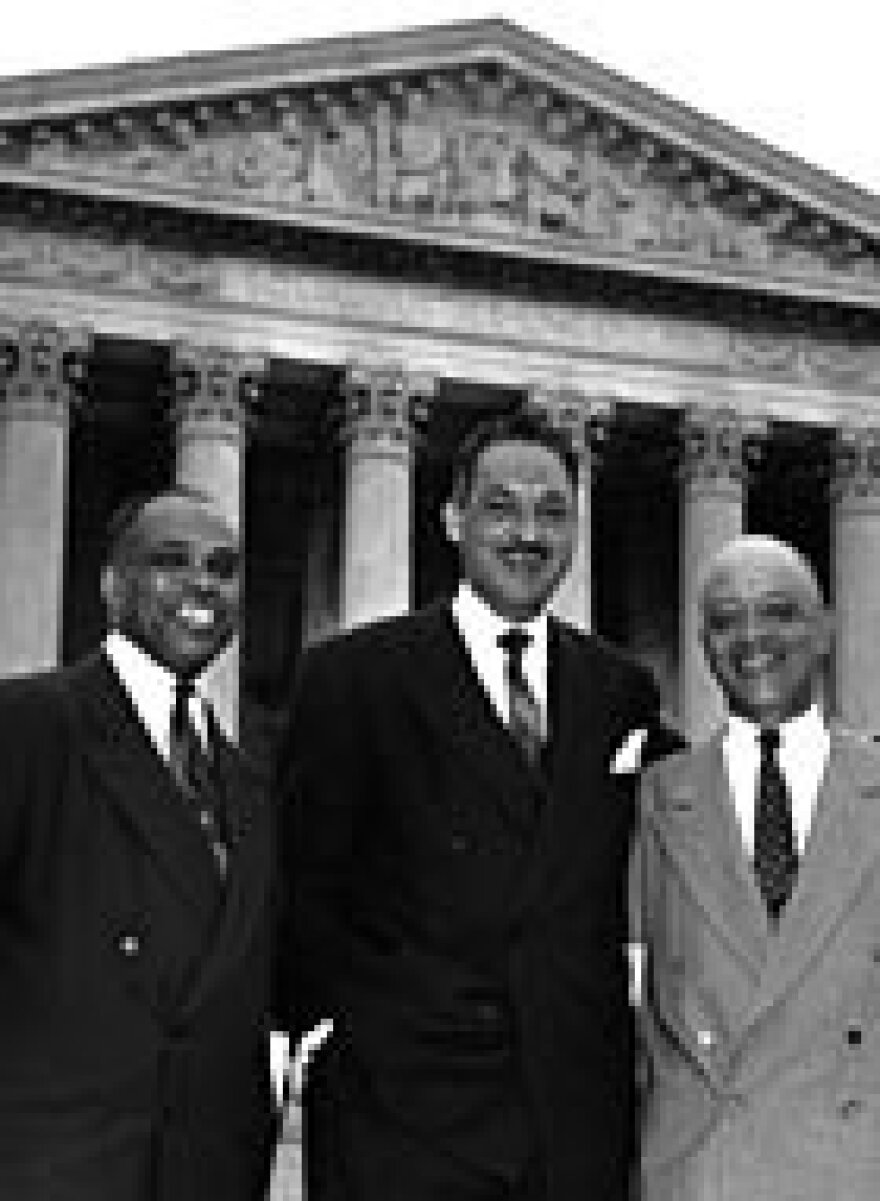Brown v. Board of Education is the landmark U.S. Supreme Court case that ended legal segregation in the public school system. That was in 1954. Now a mural commemorating the case will be painted inside the Kansas Statehouse in Topeka.
After reviewing the work of four finalists, the Capitol Preservation Committee chose artist Michael Young to create the mural. Cheryl Brown Henderson is the youngest daughter of Rev. Oliver Brown, a plaintiff in the historical civil rights case named after him.
Hear Brown Henderson's 2010 conversation with NPR's Michel Martin.
"My role in this initially was simply to provide background information about Brown v. the Board of Education because the committee had to put together a request for artistic proposals," Brown Henderson says. "So they needed to have some historic background and narrative so the artist could get a feel for what Brown was, the people involved, and use that as a guide to develop their art since the art is supposed to be an artist depiction of this history."
She says she likes Young’s work because of its simplicity.
"When you think about the general public and you think about school children and you think about people visiting in any sort of historical place, some of them, yes, will stand there and read word after word, [but] they are rare," Brown Henderson says. "Most need to get the idea in just a matter of few seconds so this particular art work encapsulated that."

She says the artwork shows a lot of early activism: an African-American educator reading to a diverse group of students who surround her; a newspaper headline reading "School Segregation Banned"; and in the background, the U.S. Supreme Court building with civil rights attorney Thurgood Marshall, who argued the case. Marshall would later become the nation’s first African-American Supreme Court justice.

Brown Henderson says this wasn't the first school desegregation case in the state.
"What’s unique about Kansas, unlike any other state in the union, is there were 11 school desegregation cases argued in state Supreme Court before Brown v. Board," Brown Henderson says. "And it’s important to know because African Americans did this on their own even before there was an NAACP. African Americans recognized the importance of education."
Brown Henderson points to an 1881 desegregation case in Kansas: Tinnon v. The Board of Education of Ottawa. Elijah Tinnon was one of the first African-American parents to challenge school segregation through the Kansas Supreme Court.
"So every two years African Americans were organizing cases, they would make their way to the state Supreme Court, and some of the cases were successful because Kansas did not allow towns smaller than 15,000 to segregate their schools," Brown Henderson says. "So that’s another caveat that a lot of people are not aware of, but also, we’re only talking about elementary schools."
She says most junior high and high schools in Kansas were integrated. As the founding president of the Brown Foundation for Educational Equity, Excellence and Research, Brown Henderson spends a lot of time educating the country about the historic case.
"It’s one of those things that if you say to somebody, 'Have you ever heard of Brown vs. the Board of Education?' they might say, 'Yeah, wait a minute, I think I’ve heard of that,"" she says. "But it doesn’t go any further than that in terms of their understanding of its complexity and the length of time that it took."
See NPR's special project commemorating 50 years since Brown v. Board.

Brown Henderson was born just after her father joined the team of plaintiffs that stood with the NAACP. Oliver Brown did so on behalf of Cheryl’s older sister, Linda, who was forced to go out of her neighborhood near a white school to a black school a walk and a bus ride some distance away.
The NAACP in Topeka needed plaintiffs to take the case to the federal court. A large recruitment effort took place, and in 1950, an NAACP attorney approached Oliver Brown.
"Charles Scott came to our home. He had been a friend of my father's and asked him if he would be willing, and after some deliberation he said yes," Brown Henderson says. "He was the 10th person to join that team of 13 plaintiffs, so it’s a huge backstory. They simply wanted better for their children in terms of access."

Brown Henderson says the mural will help to shed light on the historic landmark case in which it was established that "separate education facilities are inherently unequal." She says the state Capitol is an appropriate place for the piece.
"Kansas has such an incredible history," she says. "Kansas was such a progressive state. We’ve lost some of that along the way, but I think this will be a reminder about what Kansas represented for the nation, and how the progress that benefited so many--not simply African Americans, but women, the women’s movement, and people with disabilities and marriage equality and all of the things that came after the 14th Amendment. ... Brown v. Board informed those, and so to me this is kind of a beacon."
Oliver Brown died in 1961. Brown Henderson says her 95-year-old mother is looking forward to seeing the mural, which is expected to be complete in about a year after fundraising.
--
Carla Eckels is assistant news director and the host of Soulsations. Follow her on Twitter @Eckels.
To contact KMUW News or to send in a news tip, reach us at news@kmuw.org.






